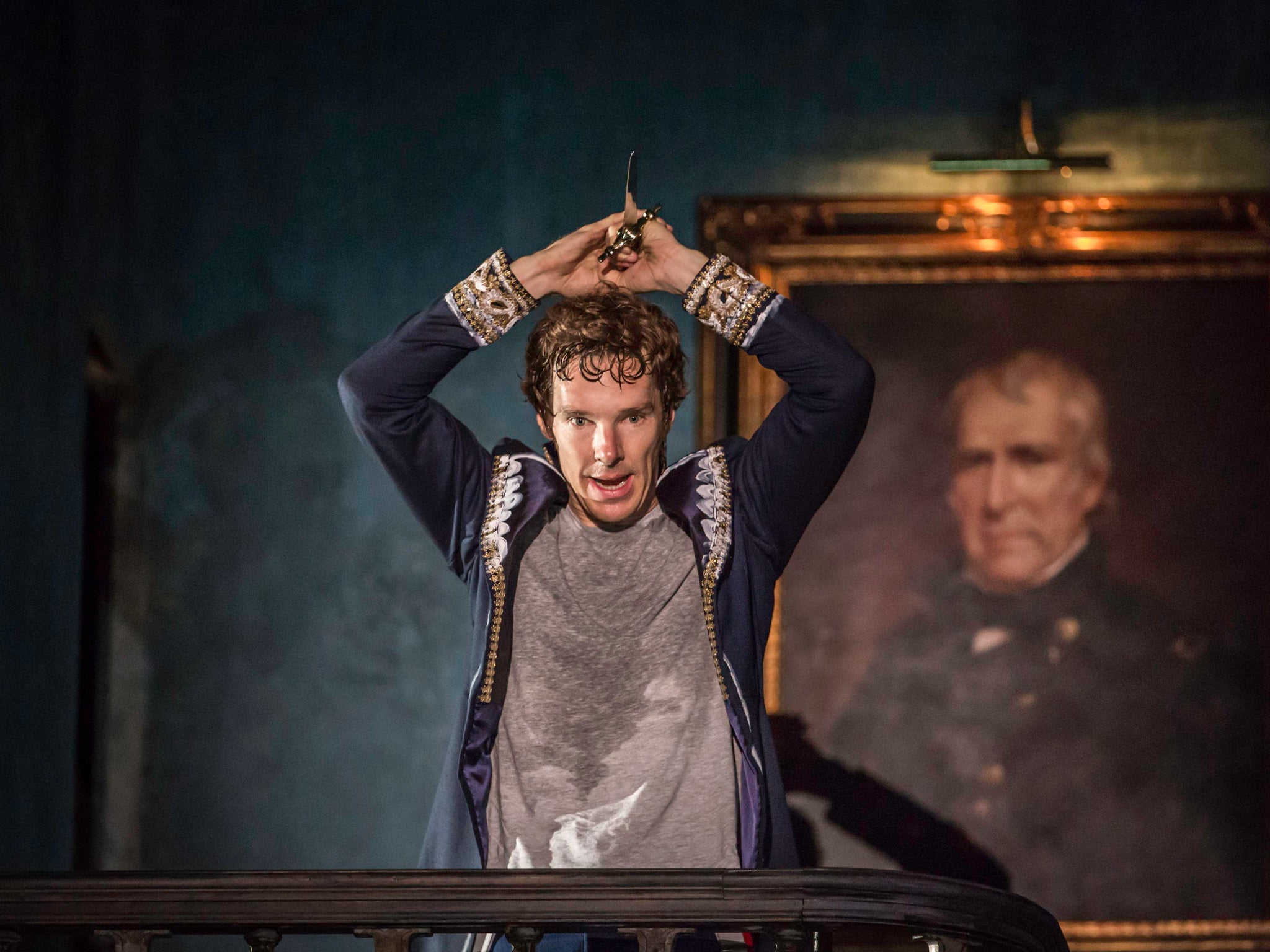Hamlet at the Barbican: A new way of staging Shakespeare's play shouldn't be lambasted out of hand
Moving 'the speech' was a bold move and it might have worked at the Barbican – as it has in the past

I haven’t seen the new Barbican production of Hamlet, nor will I get the chance to, but moving The Speech to the top of the show, to what writers call the “cold open” slot, was a bold choice.
They’ve moved it back now, to where Shakespeare put it. Some critics have called this spineless, saying it shows a lack of faith in the production’s own ideas, and thereby that the concept – to open the play with the speech – was a gimmick.
Moments after deciding to stage a play to catch the king, Hamlet returns on stage, looks up and says: “To be, or not to be …” In its broadest light, the speech is a reflection on the nature of human existence, on the nature of our mortality, and what happens after that mortality comes to an end.
Is there an afterlife? If there’s nothing after our time on this earth, perhaps we would live life differently; indeed, if we knew for sure that there absolutely was a better place after this realm, surely we’d just end it all, and go on to that better place, rather than suffer here? Some see the scrutiny of life and death more specifically as the private reflection of a depressed man contemplating suicide.
Indeed, dip into a modernised-English version of Hamlet, and you’ll find something like: “Shall I live, or shall I kill myself?”, an interpretation sharpened up in Trevor Nunn’s 2004 Old Vic production of the play, as Ben Whishaw walked on to the stage with pills and a bottle of water. But he’s finally made his first real decision in the play, to trap his murderous uncle/king, so why contemplate suicide?
In response to this question, Peter Brook in 2001 moved “To be, or not to be …” slightly earlier in the play. The thing is there’s already a speech when Hamlet more openly thinks about suicide: the first time we see him, full of grief at his father’s sudden death, he passionately wishes God hadn’t made suicide immoral. And Shakespeare rarely repeats the same dramatic beats.
In one of the other big speeches, “O, what a rogue and peasant slave am I?”, Hamlet asks his audience if they think him a coward for doing nothing – a commonly held criticism of this seemingly passive, depressed, over-thinking prince (even though Macbeth, Richard, and Coriolanus worry about cowardice, too).
He returns to that word “coward” moments later in “To be, or not to be …”, telling us that conscience doth make cowards of us all – that if you critics, watching me, thought about life and death the way I do, you too would appear “cowardly”.
It’s an extraordinary bit of theatrical writing, in the middle of a sequence of extraordinary bits of theatrical writing: an explanation of how one particular type of person thinks – barely the tip of the iceberg of a terrific intellect. To be. And, not to be. Life and death smashed together, one and zero, everything and nothing, the beginning and the end.
Simply put, at the top of the play, Hamlet’s not “there” yet. As an audience, we aren’t “there” yet either: we have no idea who this person is, nor why we should listen to him discuss something so personal and so profound.
Thomas Ostermeier began his 2011 production in the Schaubühne in Berlin with the first three lines of the speech, and repeated them later, before letting the full speech out. It deflated the “how will he say it?” expectation, and allowed the audience to really listen to the speech when it came in its entirety.
So why did the director of the current production apparently crumble and move it back?
Great ideas are thrown around in a rehearsal room like tennis balls. Sometimes one is caught and run with, short-circuiting from the heart to the mouth to the production. The phrase “we’ll have to see how it lands in preview” is muttered, because whatever you do in rehearsal, a show doesn’t become “a show” until it’s performed in front of an audience, who will teach you the beats, the soundtrack, the rhythm of a play – if you listen.
Echoing beyond the hysteria of the first night’s front rows, a note of discord can be more felt than heard, and quickly turn faith in a provocative idea to mush.
Rethinking a speech, or casting an A-list film star, or setting the play on the Moon can draw audiences who would never normally engage with a 400-year-old piece of our heritage.
Whether it’s lionised or trashed, the attempt at something new and different keeps Shakespeare alive. As Ostermeier says: “You shouldn’t be upset – everything is allowed in the theatre.”
Ben Crystal is artistic director of Passion in Practice and its Shakespeare Ensemble
Join our commenting forum
Join thought-provoking conversations, follow other Independent readers and see their replies
Comments